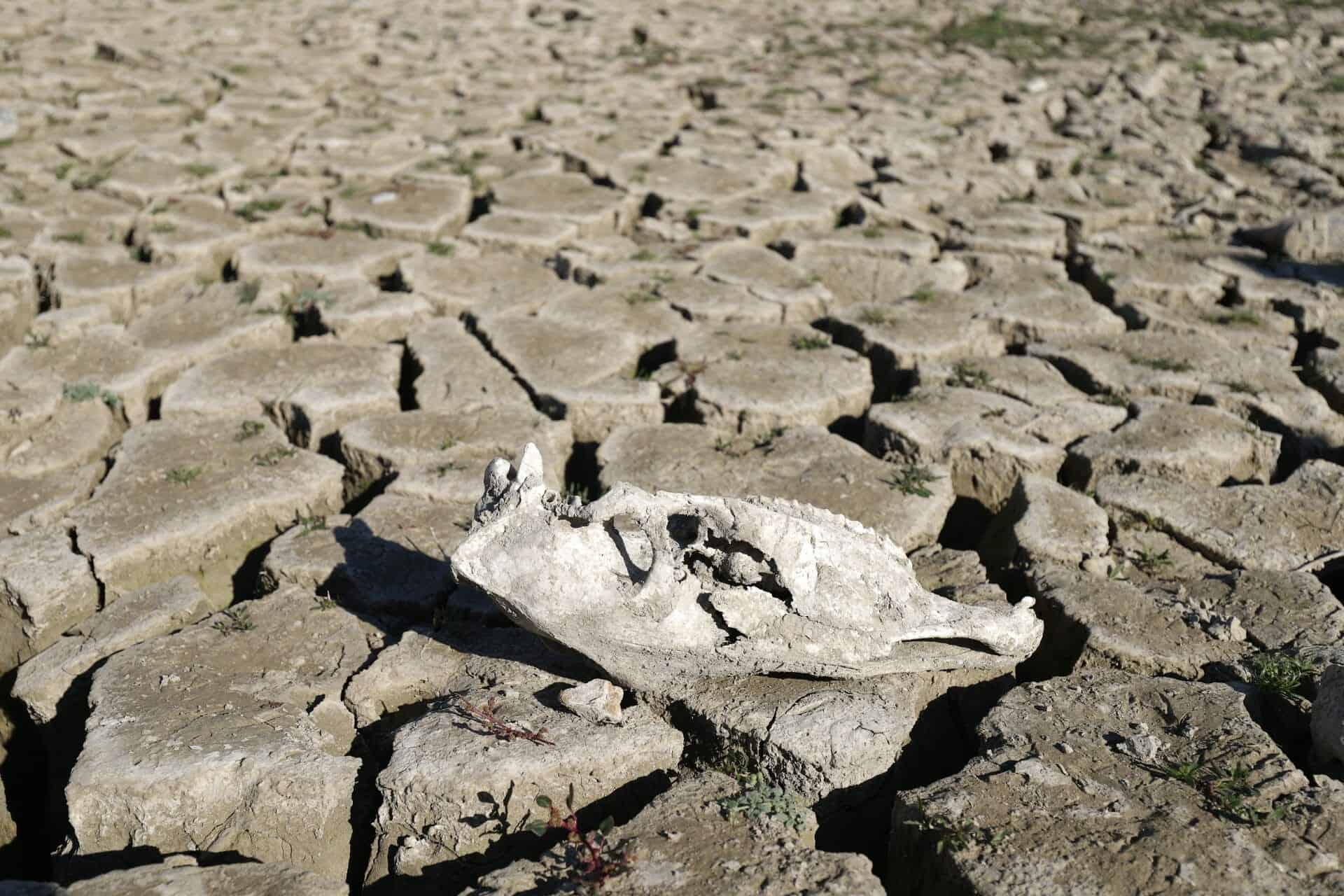Low rainfall, structural damage and extraction by struggling farmers have emptied a key reservoir in northwestern Syria, leaving it completely dry for the first time, farmers and officials told AFP.
With man-made climate change increasing the frequency of drought and wildfires worldwide, Syria is experiencing one of its driest and hottest years on record after historically low rainfall last winter.
The reservoir formed by Al-Duwaysat Dam in Idlib province, a key irrigation source for thousands of farmers, has completely dried up for the first time in its 27-year history.
The exposed lakebed is parched to a crisp in many places, a sinister expanse littered with stranded rowing boats, animal skulls and dead trees.
A few shallow pools remain, around which small flocks of sheep graze on new shoots.
According to the World Bank, the reservoir has a capacity of 3.6 million cubic meters (38.8 million square feet) and is mainly used for irrigation and water supply.
“Because of drought and low rainfall, we can now walk on the floor of the reservoir,” its managing engineer Maher Al-Hussein said, recalling that it was full to capacity just two years ago.
Low rainfall last winter left the reservoir half-full and all the water was used for irrigation by farmers trying to save their crops, Hussein said.
Damage to the main pipeline that feeds water from the reservoir to irrigation networks has led to significant leakages, further reducing the volume that reaches the fields, he added.
“It is the first time the reservoir has dried out since it was built in 1994,” Hussein said.
He said around 800 families depended on the reservoir to irrigate 150 hectares (370 acres) of farmland.
“For 10 years we have come to this reservoir,” said cattle farmer Abu Joumaa. “If God does not send us good rainfall that could fill the reservoir this year… people won’t be able to grow crops they rely on to make a living.”
Syria reservoir dries up for the first time in 27 years

- The reservoir has a capacity of 3.6 million cubic meters (38.8 million square feet) and is mainly used for irrigation and water supply.
- Around 800 families depended on the reservoir to irrigate 150 hectares (370 acres) of farmland.






